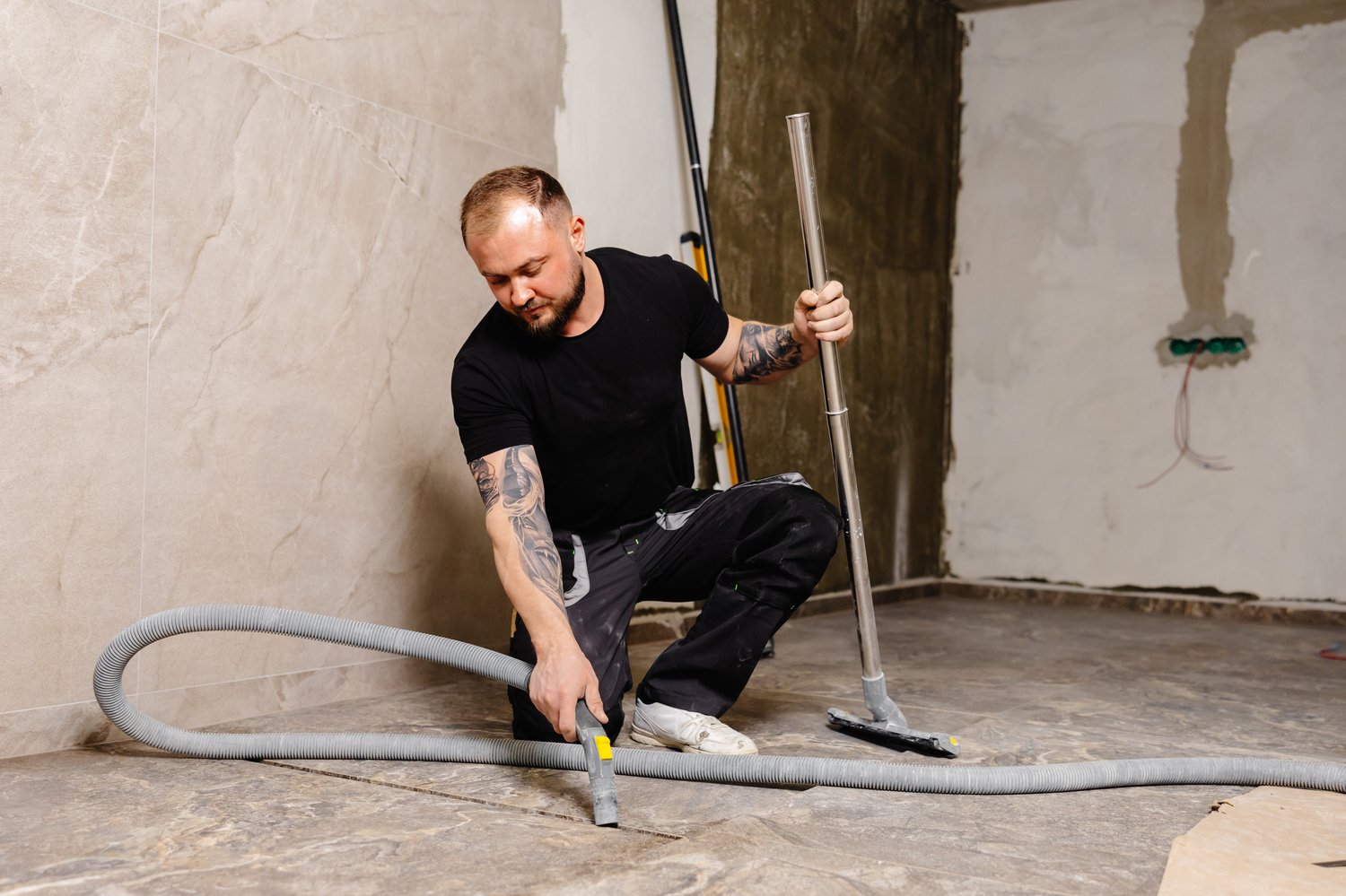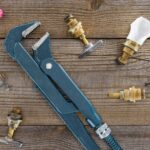Clogged drains can be a household nightmare, causing frustration and potentially costly repairs. However, mastering the art of using a drain snake can transform this daunting task into a manageable DIY project. By applying professional techniques, you can ensure your plumbing runs smoothly, ultimately saving you time and money.
- Learn the different types of drain snakes and find out which one is best suited for your home plumbing needs.
- Step-by-step instructions on how to effectively use a drain snake, including setup, execution, and safety tips.
- Find solutions for common problems encountered during drain snake operations, from dealing with stubborn clogs to maintaining tool performance.
- Discover maintenance tips that can significantly extend the lifespan of your drain snake, ensuring it remains a reliable tool in your home maintenance arsenal.
By delving into this guide, you’ll gain the confidence to tackle plumbing challenges with professional finesse, maintaining a smoothly running household with ease. Explore the upcoming sections to unlock practical insights and ensure long-term success in your plumbing endeavors.
Understanding Drain Snake Operation: Professional Techniques for Home Use
The drain snake, also known as a plumbing snake or auger, is an indispensable tool for homeowners seeking to maintain their plumbing systems efficiently. Its primary function is to clear blockages in pipes, offering a more effective solution than traditional methods like plungers.
Understanding the various types of drain snakes available ensures you’re equipped to handle different plumbing challenges. Manual drain snakes, often called handheld augers, are ideal for minor clogs in sinks or showers. They are simple to use and don’t require any power source. Consider an electric drain snake for more challenging clogs that occur deeper in your plumbing system. These powered versions can tackle tougher blockages with ease, minimizing the risk of damage.
Another variation is the toilet auger, specifically designed to clear clogs in toilets without causing damage to the porcelain. Recognizing the right type of drain snake for each situation is crucial. This knowledge helps you approach plumbing problems with confidence and minimize potential disruptions to your household.
Choosing the Right Drain Snake for Your Needs
Selecting a drain snake that suits your home plumbing needs is essential. When considering size, think about the diameter and length of the snake you need. A longer snake can reach deeper blockages, while the diameter can dictate the type of pipe it suits.
Type is another key factor. Manual drain snakes are user-friendly and suitable for smaller jobs, making them perfect for DIY enthusiasts. On the other hand, motorized drain snakes are more powerful, providing the force necessary to handle stubborn clogs in larger pipes.
The power source of the drain snake is also important to consider. If opting for an electric model, ensure your home can accommodate its requirements, such as electrical outlets in close proximity to where you will be working.
By carefully choosing the right drain snake, you can effectively resolve plumbing issues without the need for professional intervention. This ensures your plumbing system remains in peak condition, preventing future disruptions and extending the life of your pipes.
Mastering Drain Snake Operation: Professional Techniques for Home Use
A drain snake, also known as a plumbing snake or auger, is an essential tool for homeowners looking to tackle common drain clogs. To use a drain snake effectively, understanding the steps involved is crucial.
Setup: Begin by inserting the snake into the affected drain or pipe, making sure to push gently to avoid any damage to the plumbing fixtures. Ensure you’re wearing protective gloves to safeguard your hands before you start.
Execution: Rotate the snake slowly as you push it deeper into the pipe. This motion helps the snake’s coil catch debris blocking the pipe. Continue feeding the snake until you feel resistance. Once a clog is engaged, apply a gentle push-and-pull motion to dislodge it.
Safety Tips: Always turn off the water supply to the affected area. This prevents accidental flooding while you work. Be careful not to use excessive force, which can cause damage to pipes or lead to injury.
By mastering these techniques, you can efficiently resolve many plumbing problems without professional assistance, saving you time and cost.
Troubleshooting Common Issues During Drain Snake Operation
Occasionally, while using a drain snake, you might encounter challenges. Here are some common problems and solutions:
Stubborn Clogs: If the snake doesn’t seem to clear the blockage, withdraw it and check for any debris clinging to the coil. Remove any obstructions, then reinsert the snake and try again.
Handling the Snake Properly: If the snake isn’t progressing, ensure you’re rotating it correctly. Incorrect handling can cause the snake to bind, making it less effective. Practice makes perfect, so be patient with the process.
Maintaining Optimum Snake Performance: Regularly clean your drain snake after each use. This prevents residue build-up, which can hinder its performance. Store the snake in a dry place to avoid rust and ensure its longevity.
By identifying these issues and applying the right solutions, you enhance your ability to maintain effective plumbing operations at home.
Maintenance Tips for Prolonging Your Drain Snake’s Lifespan
Maximizing the lifespan of your drain snake is essential for maintaining efficient plumbing operations at home. Regular maintenance is key to preventing unnecessary wear and tear. By implementing proper storage techniques, you can ensure your drain snake remains a reliable tool for tackling clogs.
Cleaning Your Drain Snake: After each use, it’s vital to clean your drain snake thoroughly. This helps prevent the buildup of grime and rust, ensuring smoother operation during its next use. Start by wiping the cable with a damp cloth to remove debris. Then, use a sponge with mild detergent to eliminate any greasy residues. Making sure that the snake is completely dry before storage will reduce the risk of corrosion.
Inspecting for Damage: Regular inspection of your drain snake will help identify any potential issues early on. Check for signs of wear, such as kinks or cracks in the cable, which can compromise its effectiveness. Addressing these problems promptly will prevent further damage and maintain the tool’s efficiency.
Storing Your Drain Snake Correctly: Proper storage ensures that your drain snake remains functional over time. Store it in a dry, cool area away from extreme temperatures. This prevents the cable from becoming brittle or corroded. It’s advisable to coil the snake loosely to avoid kinking and maintain its flexibility.
By incorporating these practical tips into your maintenance routine, you ensure that your drain snake stays in top condition. This not only extends its service life but also enhances its performance when clearing stubborn clogs. Regular care and attention to detail can transform this tool into a long-term asset for managing your home’s plumbing needs efficiently.
FAQ: Mastering Drain Snake Operation at Home
What is a drain snake?
A drain snake, also known as a plumber’s snake or auger, is a tool used to unclog drains and pipes by breaking up or retrieving blockages.
How often should I use a drain snake?
Use a drain snake when you encounter a clog that does not clear with a plunger or other basic methods.
Can a drain snake damage my pipes?
Yes, if used improperly. To avoid damage, carefully follow usage instructions and do not force the snake.
What types of drain snakes are available?
- Manual Handheld Snakes
- Electric Snakes
- Toilet Augers
- Drum Augers
How do I maintain my drain snake?
Clean after each use, oil moving parts, and store it in a dry place to prevent rust.
What should I do if the drain snake gets stuck?
Gently reverse the direction to dislodge it. Avoid excessive force which can damage pipes.
Do professional plumbers use drain snakes?
Yes, they are a common tool used by professionals for clearing clogs effectively.





